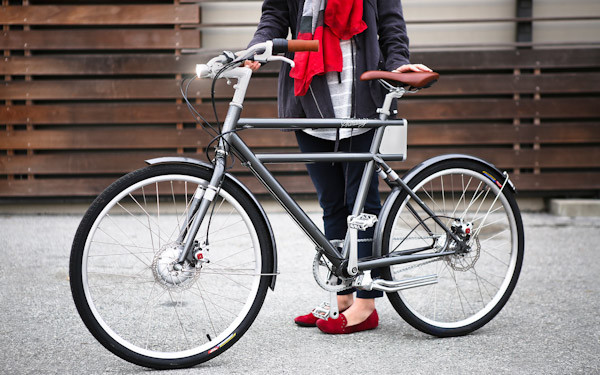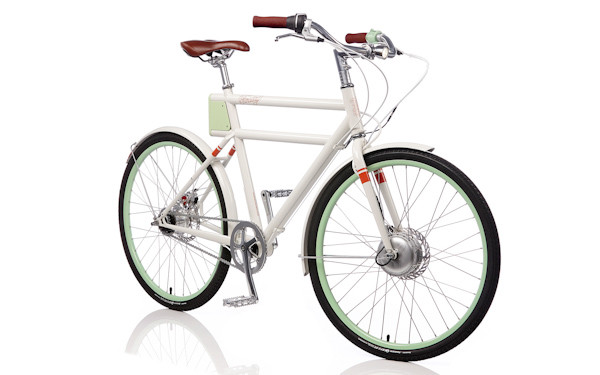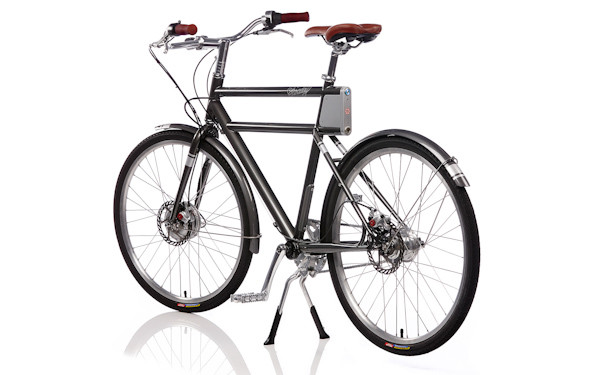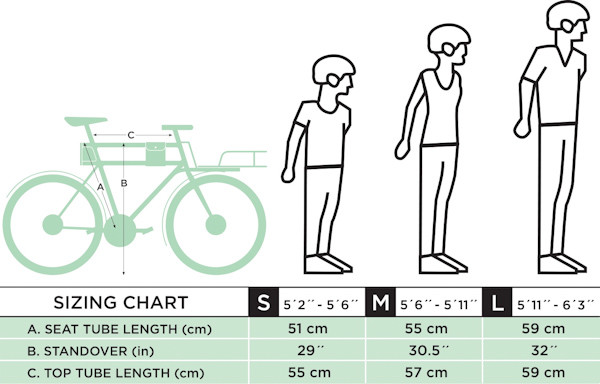Named for a British physicist whose research helped develop today’s electric motors, Faraday Bikes is an electric bike manufacturer based in San Francisco, CA. The original Porteur was the company’s first e-bike, featuring a classy design inspired by European delivery bikes of the 1940’s and 50’s. The new Porteur S is a more affordable model of the Porteur. It features the same frame, motor and battery as the flagship model but at a much lower price point under $3000 USD.
“We don’t believe people should have to compromise quality, or great design, to get an eBike in their price range,” said Adam Vollmer, Founder and CEO of Faraday Bicycles. “That’s why we worked so hard to make sure this bike delivered the same great experience as our flagship model.”
Check out all the details and where the money was saved after the break…
The Porteur S provides pedal-assist power only, using a nearly silent 250 watt motor on the front hub that creates virtually no friction while you’re cruising. The bike is turned on by pressing a button on the compartment under the seat, and the motor offers three assist settings controlled by a thumb switch; Off, Standard and BOOST. The maximum rider weight limit is 275lbs. One of the best attributes of the original Porteur as we recently found out on a trip to Berkley, is the fact that when the motor is turned off the Faraday almost feels like a normal, non-assisted bicycle. That makes riding with the motor off or at the lowest level much more practical and allows you to save battery for any monster climbs or fast roads on your route.
The 240 watt, 43v lithium-ion battery is hidden in the frame’s down tube, charges in 3 hours with Faraday’s 2A charger and provides up to 20 miles of assisted pedalling. The battery should last for around 10,000 miles of riding, but if needed replacements can be performed by any bike shop and a new battery will cost about $400. All of the bike’s electronics are sealed to handle rainy commutes, and mostly hidden from view inside the frame.
To make the S model more affordable, Faraday switched from an 8 speed hub to a 5 speed Sturmey Archer internal rear hub, and stuck with a traditional chain instead of a carbon belt drive system. They also spec the bike with cork grips instead of leather, and alloy fenders in place of the original Porteur’s bamboo units. Otherwise it’s very similar to the Porteur with e-bike features like 4 watt LED head and taillights and Faraday’s E Ink fuel gauge.
The Porteur S has a chromoly frame and weighs 39lbs complete (size medium) so it’s still possible to lift it onto a bus or up stairs. Faraday’s swoopy handlebars put the rider in an upright position that provides a comfortable ride and keeps your head up so you can monitor the traffic around you.
Other components are mostly the same as the Porteur, with a few minor downgrades. The S is equipped with a chromoly fork with threadless steer tube, Avid mechanical disc brakes, 26x35mm tires mounted to 36 spoke Alex rims, Faraday’s city saddle, riser stem and alloy pedals, plus nice urban touches like a chain guard and scissoring kickstand. Upgraded saddles and matching front and rear racks are also available.
The frame comes in small (51cm), medium (55cm) and large (59cm) sizes, and while it is intended as a unisex bike a step-through style frame is planned for the future. Faraday provides a two year warranty on the frame, all components excluding typical wear items, and the battery.
The Porteur S Comes in Classic White or Faraday Grey, and can be pre-ordered now through Faraday dealers or the company’s website with delivery expected for August 2015. All pre-orders will be automatically entered into a draw to win an upgrade to a fully accessorized Porteur S. MSRP for the Porteur S is $700 less than the original model, at $2799 USD.




